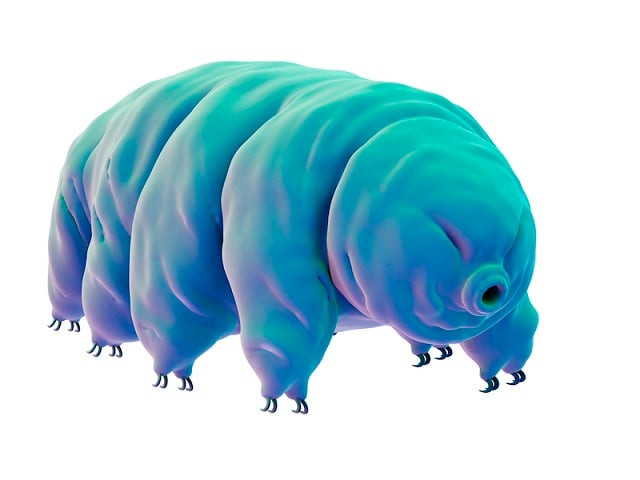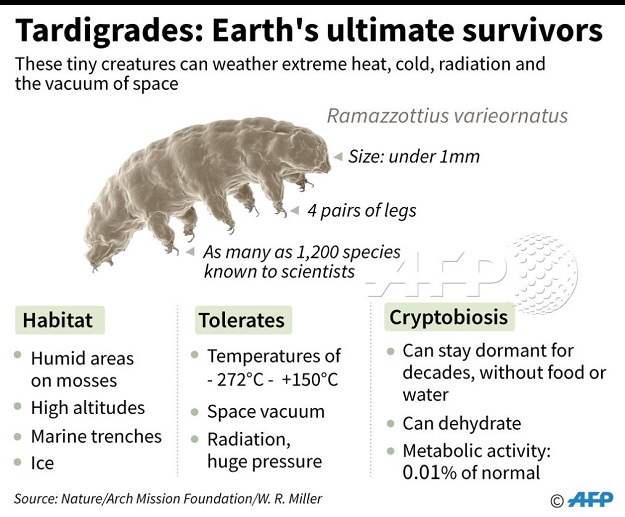Hordes of Earth's toughest creatures may now be living on Moon
These creatures withstand sizzling heat, the coldest temperatures of the universe, and decades without food

Tardigrades, as the water bears are more prosaically known, have long fascinated scientists with their veritable superpowers of survival. PHOTO: AFP
These terrifying-sounding beings aren't aliens but instead microscopic Earthlings known as tardigrades, who likely made it out alive following a crash landing on the lunar surface by Israel's Beresheet probe in April, the US-based organisation responsible for their trip said on Tuesday.
Based on an analysis of the spacecraft's trajectory and the composition of the device the micro-animals were stored in, "we believe the chances of survival for the tardigrades... are extremely high," Nova Spivack, co-founder and chairman of the Arch Mission Foundation, said.
"Tardigrades are ideal to include because they are microscopic, multi cellular, and one of the most durable forms of life on planet Earth," said Spivack.
 The tardigrades were stored inside a 'Lunar Library,' a nanotechnology device that resembles a DVD and contains a 30-million-page archive of human history viewable under microscopes, as well as human DNA.
The tardigrades were stored inside a 'Lunar Library,' a nanotechnology device that resembles a DVD and contains a 30-million-page archive of human history viewable under microscopes, as well as human DNA.Spivack is confident this too survived impact -- but it doesn't represent the first genetic code or life forms to be deposited on the barren celestial body.
That distinction belongs to the DNA and microbes contained in the almost 100 bags of feces and urine left behind by American astronauts during the Apollo lunar landings from 1969-1972.
Also known as water bears or moss piglets, tardigrades can live in water or on land, and are capable of surviving temperatures as high as 150 degrees Celsius (302 degrees Fahrenheit) and as low as minus 272 degrees Celsius (-458 Fahrenheit), albeit for a few minutes.
The grub-like, eight-legged animals can come back from being dried out to a lifeless husk for decades, withstand near-zero pressure in outer space and the crushing depths of the Mariana Trench.
If they did not burn up in an explosion, they could in theory survive the tiny pressure on the lunar surface, and the extremes of temperature, William Miller, a tardigrades expert at Baker University, said.
"But to become active, to grow, eat, and reproduce they would need water, air and food," so it would not be possible for them to multiply and form a colony, he added.
Nasa astrobiologist Cassie Conley said that their exact survival time would depend on the condition of the impact site and the temperatures to which they are exposed.
"If they don't get too hot, it's possible they could survive for quite a long time (many years)," she said.
"I'd be more concerned that the animals would be affected by toxic chemicals from the epoxy or glue" used to store them, as opposed to conditions in space, she added.



















COMMENTS
Comments are moderated and generally will be posted if they are on-topic and not abusive.
For more information, please see our Comments FAQ